Thanks! I hope I can build them as good as I write about them. Today I was wondering about that.
In one of the steps, it had you cut away the top deck behind the cockpit and install a new piece. I had noted this on the plans, but for some reason thought that it didn't pertain to the version that I was building. I then find out that a) the canopy wouldn't fit, b) there was no place to attach the upper seat belt anchor, c) I had discarded the part thinking that it was not going to be used, and d) even if I had the part, I was WAY TOO LATE to install since the fuselage was well glued together.
The reason for this mod was that the model's fuselage was actually for the bubble canopy (later) version of the Typhoon. The clue was the canopy tracks sticking up from the fuselage. And I was very careful to not damage them in the build. This was because the video I watched for the build made a point to tell you "Not to sand it off since it's part of the model." Unfortunately for me, he was building the bubble top version which Airfix had issued earlier. The included new sprue Z was for parts that were unique to the car door verison and this part was on that sprue.
It replaced the bulge and included pin holes for the fixed canopy and the upper seat belt. I had to do some minor surgery to create a surface that would accept these unique parts. I first taped the parts I didn't want destroyed.
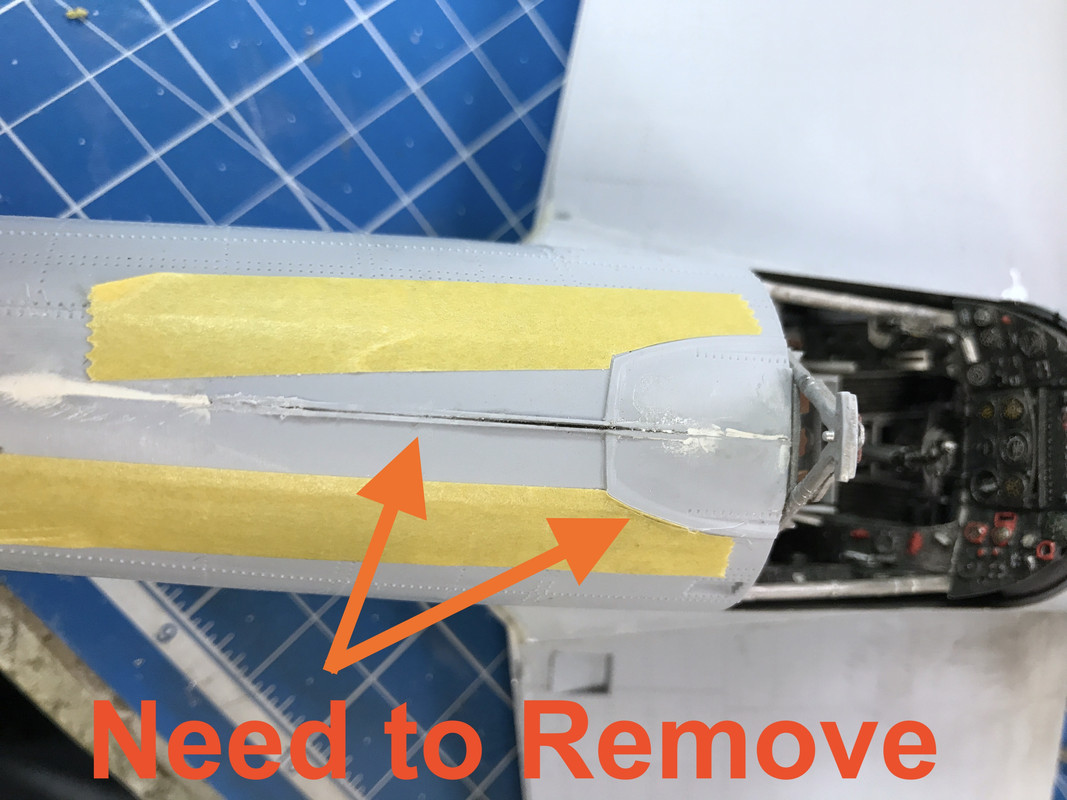
I used my MicroMark shaving chisel to remove most of the material and then sanded it with the MicroMark power sander and then hand sanding. I re-scribed the panel line and attempted to restore the now-missing rivets. I'm not too good at this riveting thing.
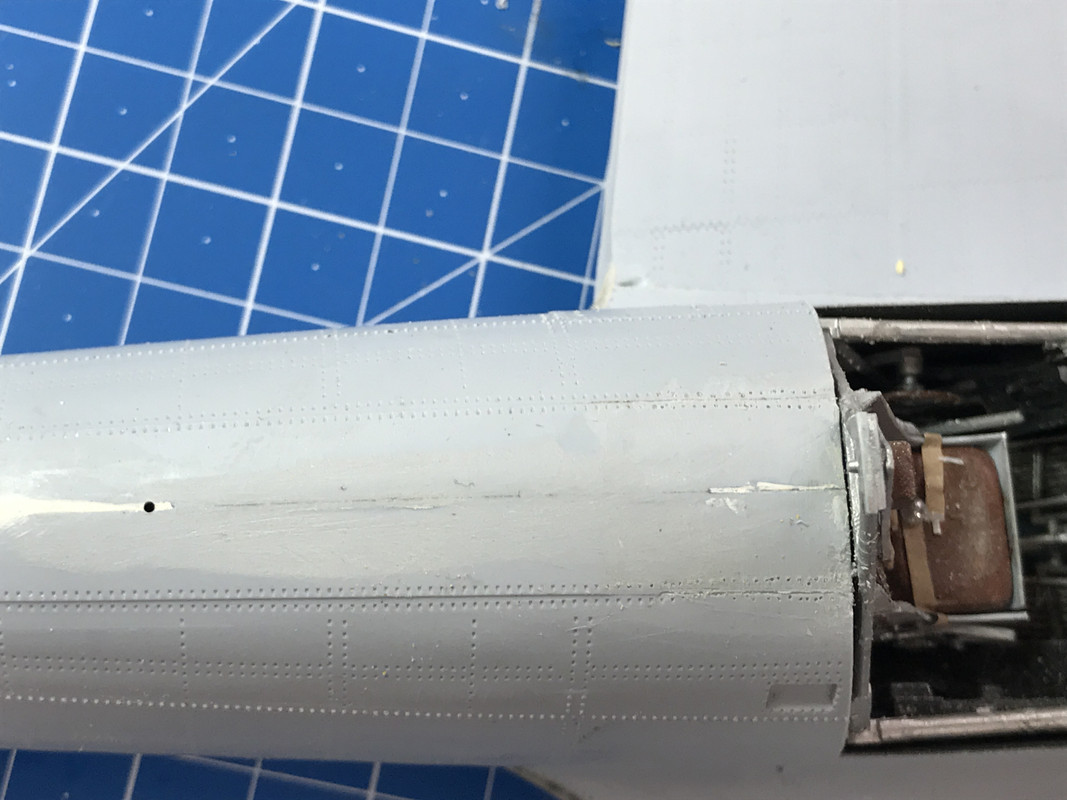
I needed to locate and drill holes for these two parts. I started with a 0.032 and ended enlarging it to accommodate the parts. It was a careful drilling exercise because it was right on the glued seam.

I installed the belt. This will have to wait to be painted AFTER the plane is painted. It looks like the deck behind the cockpit is camo color and not flat black. I couldn't find any reference in the instructions about how to paint this area. Anyone out there know? I didn't want to install the belt after painting the body for fear to screw it up.

I'm recruiting the gun bay covers that I'm not using for the model to cover the bays for spray painting. I used some sticky wax to temporarily hold them in place. It's not sealed perfectly, but shouldn't give too much leakage. I may seal it better. I should experiment spraying some clean water and seeing how much gets in and where it ends up.
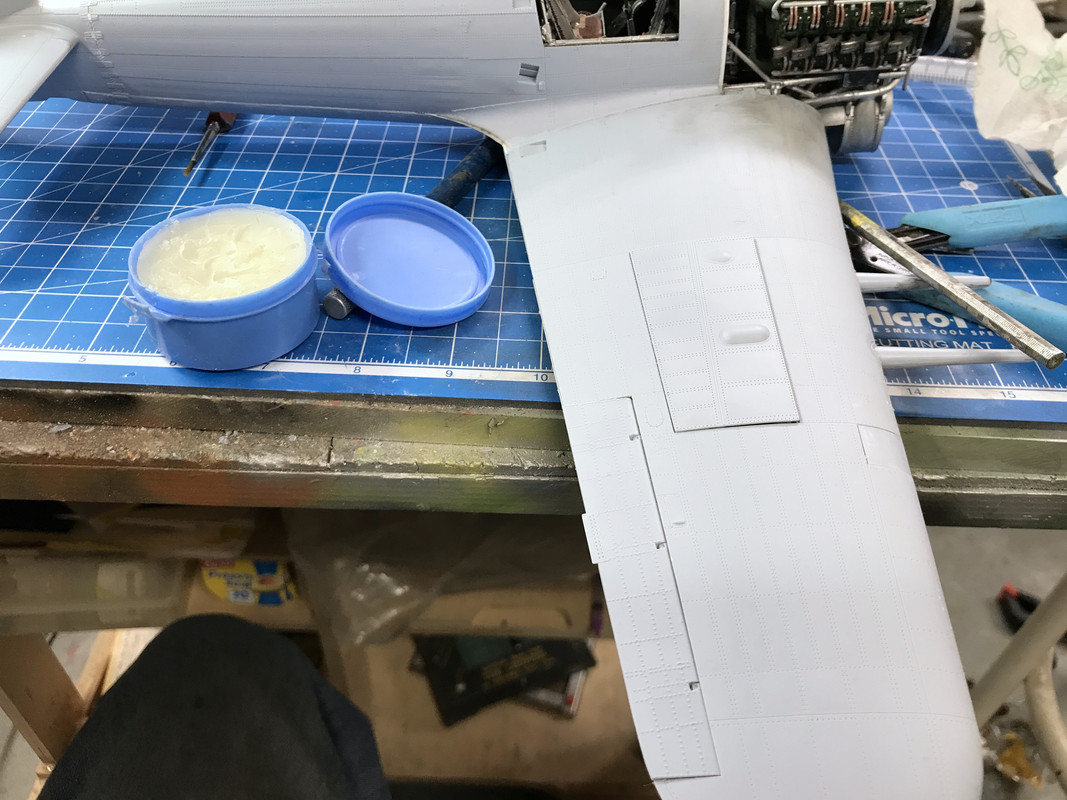
I installed the cowl part that covers over most of the instrument panel and, unfortunately, hides a lot of it. This was a bit of a struggle. It didn't fit right. I'm finding the engineering in these latter stages a bit wanting. I'm used to Tamiya and, boy, that really spoils you. I've dealt with Trumpeter's early troubles too. The cowl was being held off the lower part of the fuselage by the panel being too high, and there was a 0.040" gap on the starboard (right) side.
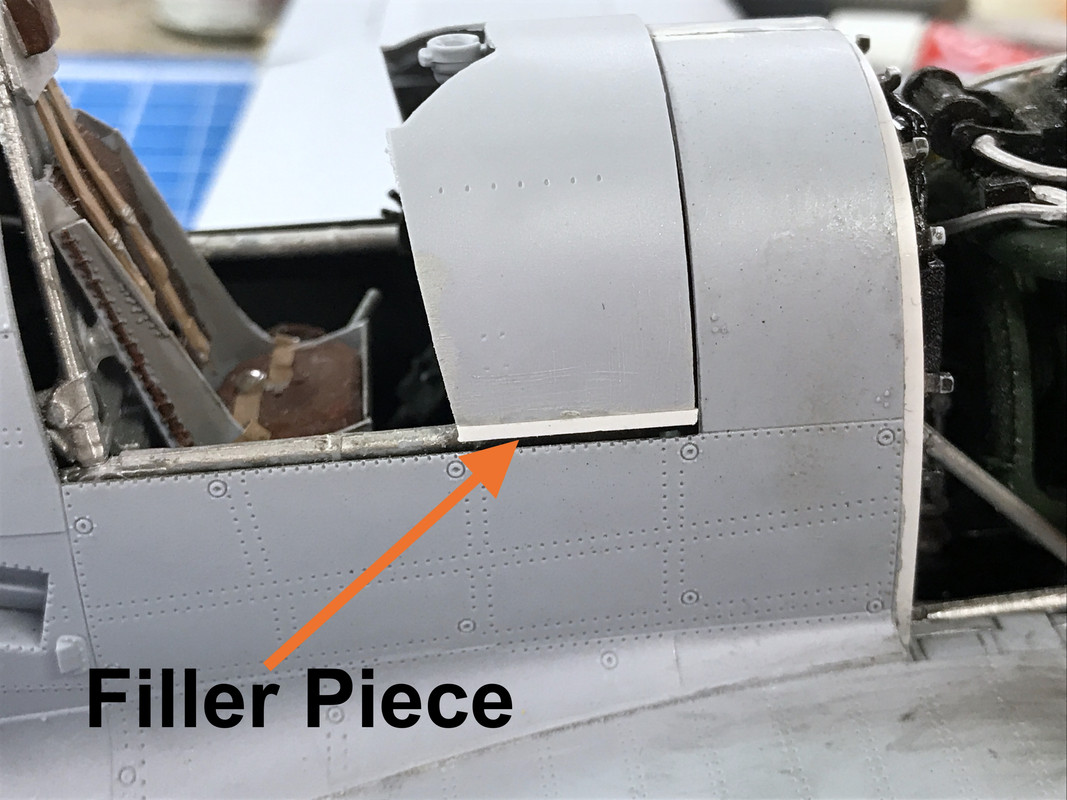
I removed some of the panel material mostly on the left side and then added a piece of styrene filler. I then glued it down and held it there with some tape. There's still a mis-match of height, although not horrible. I may or may not attempt to adjust that. This part of the model is very exposed. The front windscreen sits at the very back of this part. Before gluing it down, I air brushed the interior with NATO black and added a few more parts that also would not be easy to see when all built.

I prepared the main wheels. They had a terrible seam and I sanded the heck out them. They didn't require any filer, just sanding.
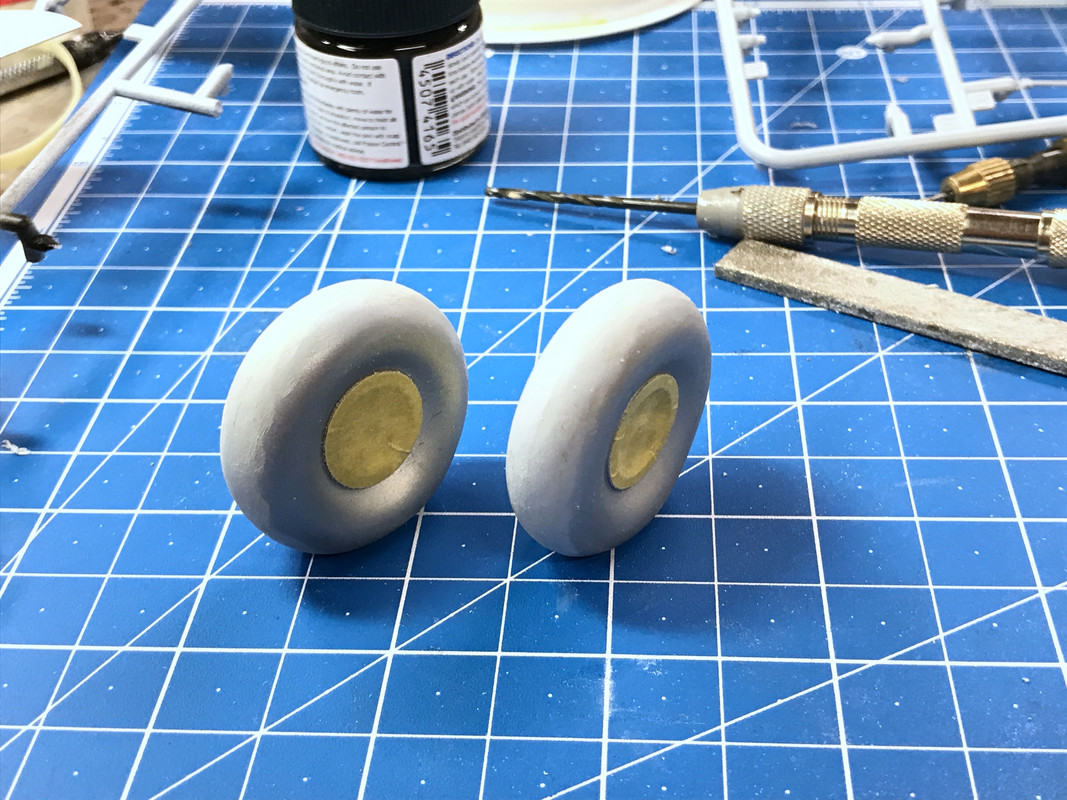
Notice the wheels are masked. I make circle masks by measuring the diameter with a digital calipers. I divide this number in half and set the same tool to this new dimension. I then use a specially prepared small Starrett machinist dividers with one point shaped to a chisel edge that's in the direction of rotation. I then cut the circles by taking a few light passes on the masking tape. It leaves a small pinhole in the middle which doesn't matter.
I sprayed them Tamiya Rubber Black. The paint's delicate.
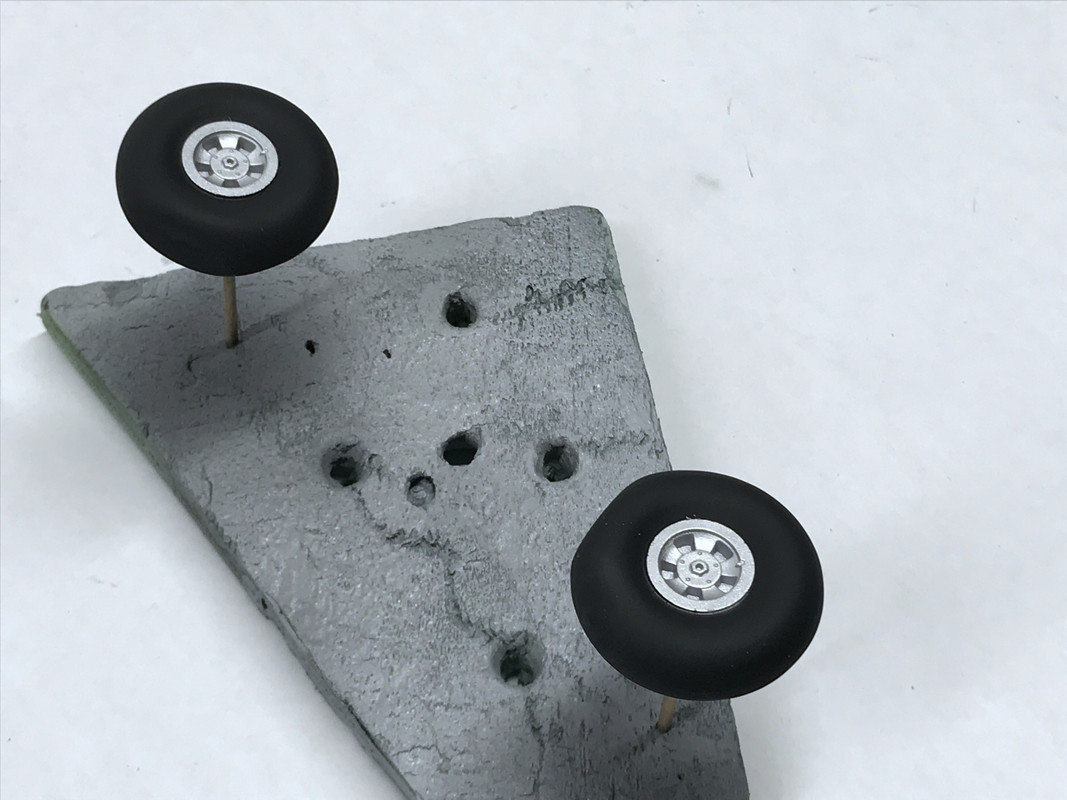
Tomorrow I'll do more subassemblies (landing gear) and start getting ready for paint. The gear doors get a sliver of the invasion stripes. I may attempt to put them on the wing so they'll be masked with the rest of the model.